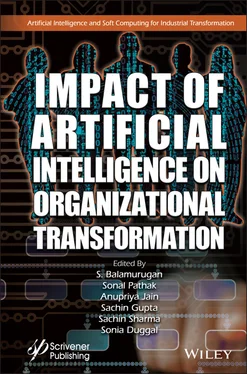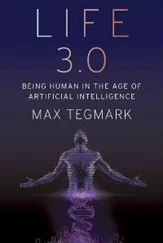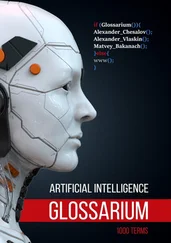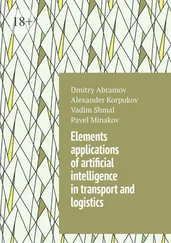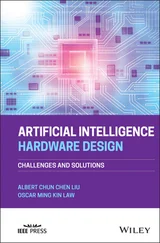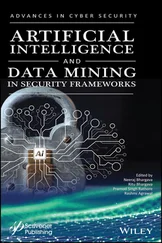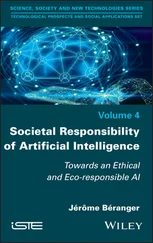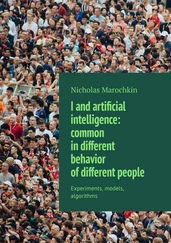A study carried by Oracle and human resources advisory and research firm, Future Workplace revealed that 80% of Asia Pacific (APAC) countries surveyed indicated that 50% of their employees are currently availing AI in some or the other form in their organization. The results also indicate that 77% of employees in China and 78% of employees in India have adopted AI which is more than double the 32% in France and 38% in the United Kingdom [23].

Figure 1.1 Benefits of Artificial Intelligence. Source: Deloitte 2017.
The study is exploratory in nature. The researchers have explored various studies on the role of AI in the various functions of HR and marketing.
1.2.1 Research Objectives
1 To explore how AI disruption is revolutionizing HR functions.
2 To explore how AI disruption is revolutionizing marketing functions.
The study is based on secondary data, sourced from various databases like Ebsco, Google Scholar, and ProQuest.
1.3 Artificial Intelligence in HRM
Research suggests that biasness creeps in when humans are assigned the task of hiring, promotion, performance appraisal, compensation, etc. For instance, racial discrimination occurs when humans are assigned the task of hiring [29]. Another study conducted by Mckinsey and Leanln revealed that entry-level women faced discrimination during the promotion as against their male counterparts [20]. Employees also face discrimination during performance appraisal on grounds of their age [33]. Research also suggests that women face discrimination while receiving compensation and promotion [18]. AI helps in overcoming such biasness. AI is used in all the aspects of HRM like recruitment, engaging the applicants and the employees, orientation, onboarding, performance evaluation, training, compensation, and employee retention. These aspects are discussed below in detail.
As against the traditional recruitment process, recruiters are now using chatbots that are powered by AI (ML) [10]. Chatbots use natural language processing to facilitate real-time interaction with the applicants through skype, email, social media, etc. They are useful in gathering a pool of information from the applicants regarding their competencies, qualification, and experience and can even generate their profile, based on the information gathered. They are programmed in such a way that they can comprehend written and oral communication and can address routine queries of the applicants appropriately. Furthermore, these chatbots are efficient enough to even prescreen potential job applicants by matching their competencies, traits, experience, culture fit, etc., with the open positions and can schedule an interview for the applicants. With the advent of AI in recruitment, the hiring process has become faster as it can auto-screen thousands of resumes in a minute which are free from biases. Examples of various chatbots used by organizations are a) IBM Watson Recruitment, b) Jobs Intelligence Maestro of DBS Bank, which has successfully decreased the time involved in screening per candidate from 32 minutes to 8 minutes [26], and c) Mya, which provides 24/7 support.
1.3.2 Engaging the Applicants and Employees
Earlier, when AI was not introduced in HR, engaging the employees was time-consuming. Now, various software backed by AI like chatbots and Applicant Tracking System can engage the applicants by addressing their routine queries on a real-time basis and update them regarding their current status. The striking feature of these chatbots is that they become robust and smarter with every interaction. Example of engaging the applicants: IBM uses Watson Candidate Assistant (WCA) to engage its applicants in personalized conversation and also suggests the job positions that resonate with their competencies and experiences in which they can excel. Such engagement is a win-win situation for both the applicants and the organization. The applicants feel delighted and the organizations also become free from committing costly hiring mistakes.
Example of engaging the employees: AI-backed Amber chatbot, which is used by Oyo, Marico Ltd., and many more, is instrumental in identifying disengaged workforce in the organization. Thus, the organizations can take measures to engage the disengaged workforce.
1.3.3 Orientation and Onboarding
Organizations organize orientation programs for acquainting the new joiners regarding the organizational culture, rules and regulations, employee benefits, etc. According to Miller, nearly 90% of the new joiners tend to miss some or the other details during the orientation program [27]. The organizations can overcome this problem by using chatbots that can answer all the queries of new joiners which they might miss during the orientation program.
The AI-backed programs are enhancing onboarding programs as well. With the help of chatbots, the newly joined employees can get all the information regarding whom to report, their team members, what work is assigned to them, etc. Example: Amber is a chatbot that is used by Oyo, Marico Ltd., and many more. Mr. Amit Prakash, Chief HR Officer of Marico Ltd., emphasized the importance of Amber in the onboarding process in Marico Ltd. He said, “When employees join us at different locations, the supervision for onboarding employees has to be better. On the day of joining, the new members are taken out for lunch with the supervisor. For me to get into that detail is difficult. Amber helps to manage this information with little effort” [1].
1.3.4 Performance Appraisal
Performance appraisal deals with gathering, analyzing, and assigning numerical values and grades to the performance of the employees. The numerical values and scores assigned by human beings for evaluating the performance may not be precise. To overcome this issue, the fuzzy logic approach is used for evaluating the performance of the employees. A study which employed hierarchical fuzzy influence approach, indicated that reasoning based on fuzzy models are more accurate in evaluating the performance of employees [4]. Studies suggest that performance appraisal based on fuzzy logic helps in drawing definite results from ambiguous information [25].
Furthermore, various chatbots are used in the process of performance appraisal. Example: Engazify is used for performance appraisal as it gives real-time feedback and appreciation to its workforce [2]. Besides, data analytics and big data are also used to evaluate the performance of the employees, wherein the grades and the ratings are assigned on a scientific basis. The process begins by feeding the integrated performance metrics into the analytics software to determine the ranks of the employees. Such automated performance appraisal is free from biases that may occur by human beings while assigning grades or while ranking and brings transparency in the appraisal system.
In this era of disruptions, the concept of one size fits all (same course content) for the learners cannot be applicable. Through AI, the learning material can be personalized in accordance with the learner’s requirements (skill gaps). With the help of AI, suitable content can be recommended to the learners, based on their past behavior. Besides, several content creation algorithms can be used to auto-generate content. AI gives the flexibility to the employees to learn at their own pace. Studies indicate that the robot training instructor can track the daily learning status of the learners and can even compute the average value of the learners’ attention [17]. Based on the learning objectives entered by the employees, the robot training instructor can automatically complete the course. Thus, AI facilitates personalized learning.
Читать дальше
